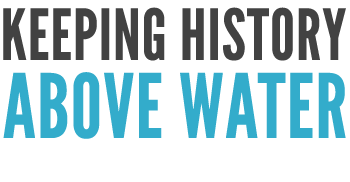Panel #1 | U.S. Case Studies
Session Chair: Pieter Roos, Executive Director, Newport Restoration Foundation
Matthew Pelz | Galveston Historical Foundation
Galveston: A History of Incredibly Violent Storms, Savvy Adaptations, and Unintended Consequences
Lisa Craig | Chief of Historic Preservation, City of Annapolis
Weather It Together: Partnering to Protect a National Treasure
Adrienne Burke | Community Development Director, Fernandina Beach, FL
Planning for Action: Sea Level rise and a Historic Barrier Island Community
SESSION ABSTRACTS
Galveston: A History of Violent Storms, Savvy Adaptations, and Unintended Consequences
Galveston occupies a barrier island in the Gulf of Mexico. In its natural state, its shifting sands continually alter the shape of the landmass, particularly during severe weather events. Since the early nineteenth century, Galvestonians have adapted to the environment through careful building design and through working to exert some level of control over the landscape. The history of these efforts is long and informative, giving us a valuable opportunity to understand their long-term effectiveness and to identify unintended consequences. | Matthew Pelz
Weather it Together: Partnering to Protect a National Treasure
The City of Annapolis is creating for Maryland’s Capital City a more disaster-resilient historic district through development and implementation of a Cultural Resource Hazard Mitigation Plan. Branded “Weather it Together: Protecting our Historic Seaport,” this multi-agency/multi-jurisdictional effort will result in the first comprehensive FEMA-based model for adapting to threats associated with flooding, fire, earthquakes, and other urban disasters. The initial focus address the impact of sea level rise, tidal flooding, and subsidence on our National Historic Landmark District – recently designated by the National Trust as Maryland’s only National Treasure. The project will serve as a model for resiliency planning efforts and implementation strategies throughout Maryland and the Chesapeake Bay region. While the process of historic survey, vulnerability assessment, economic analysis, and GIS mapping and modeling are key steps in the “how-to” process, it’s the public engagement that is proving the most beneficial to success of the project. This discussion will focus on how to organize outreach efforts with the public, key partners, and funders, to “keep history above water.” | Lisa Craig
Planning for Action: Sea Level Rise and a Historic Barrier Island Community
Fernandina Beach is a small town located on Amelia Island, the southernmost island in the Sea Islands chain of the Southeastern United States. History on the island is broad and diverse, dating from the Timucuan people to initial European contact in 1562, up through the Civil War and WWII, The City has started to plan for cultural resource impacts as a result of sea level rise through studies, partnerships and community outreach. But plans are only as good as their implementation. How does the City make choices about what to mitigate, what to save, and what to let go? Prioritizing community resource impacts from sea level rise will be a major question for communities of all sizes. For small communities with limited resources, these questions will not be easy to answer. This presentation will explore Fernandina Beach’s efforts to date and steps moving forward. | Adrienne Burke



